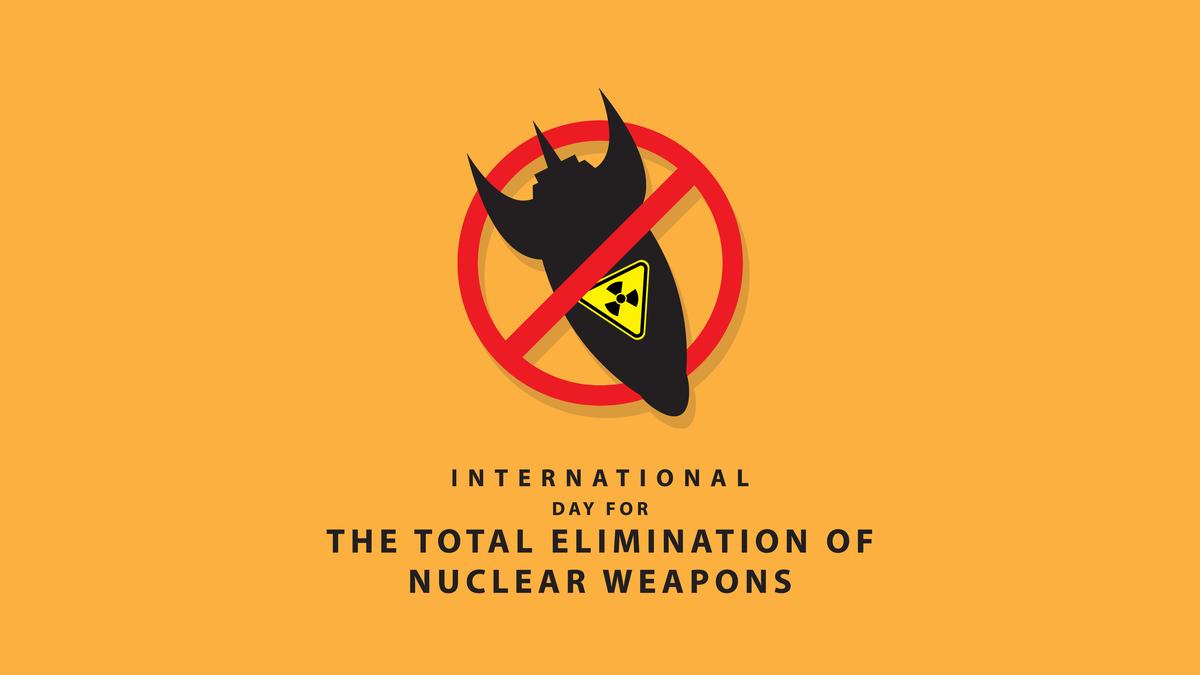In the United Nations calendar, September 26 is the International Day for the Total Elimination of Nuclear Weapons. This year’s General Assembly agenda includes a session on the Treaty on the Prohibition of Nuclear Weapons (TPNW), or the Ban Treaty, as distinguished from the Treaty on the Non-Proliferation of Nuclear Weapons, NPT. It will be a chance to take stock at a time when the UN is bitterly divided — over the war in Ukraine; over the Israel-Palestine conflict; and in responding to accelerating climate change and other related inequalities. Nuclear possession — threats or their use — threads through all these divisions. How the countries, including India, that have stayed out of the TPNW respond to the discussions will therefore matter greatly. If they allow the treaty’s supporters to continue their efforts in expanding the Ban Treaty’s footprint, the goal of the treaty — total nuclear disarmament — will be boosted. But if the treaty is undermined, nuclear weapons will become more entrenched, and the shadow of nuclear use will lengthen.
What the Ban Treaty says
The TPNW, which came into force in 2021, has once again divided the nuclear haves and their allies, and the nuclear abstainers. It is extensive in its prohibitions: signatories are barred from developing, testing, producing, stockpiling, transferring, using, deploying, keeping, or threatening to use any nuclear explosive devices. Thus, it goes beyond the NPT, which bans proliferation, but only promises to consider disarmament, and is silent on nuclear use, including deterrence.
The TPNW arose from a collection of UN agencies and NGOs coming together under the Humanitarian Initiative to highlight the lasting and pernicious consequences of nuclear weapons, covering development, deployment, and use on people, their health, and the environment. Discussions moved to the UN, with the General Assembly mandated to convene a conference in 2017 to negotiate ‘a legally binding instrument to prohibit nuclear weapons, leading towards their total elimination’. Thus the only treaty that legally bans all nuclear weapons and their use was adopted, but without the participation of nuclear weapons states and their allies, despite these states reiterating their commitment to nuclear disarmament. All of them registered their opposition to the treaty during its negotiation and when it came into force, thereby establishing themselves as ‘persistent objectors’ who could not be bound by the treaty’s provisions and who do not consider it as contributing to customary international law.
Yet, resistance to the treaty amongst the allies of the nuclear haves may not be unyielding. Recent nuclear developments, such as Russia’s nuclear sabre-rattling, China’s rising weapons count, Iran’s continuing uranium enrichment, and North Korea’s tests and threats have renewed discussions on nuclear risks. A group of former leaders and officials of NATO states published an open letter urging their countries to join the treaty and thereby “place nuclear weapons on the same legal footing as chemical and biological weapons”. Among the former Prime Ministers and other officials are two former NATO Secretaries-General and a former UN Secretary General. These are significant voices.
As of July 2024, the TPNW had 70 states parties. Another 27 had signed but not yet ratified it. This support from 97 states represents almost 50% of states and parties bound to the legal framework on weapons of mass destruction. Their efforts could precipitate a process of questioning several beliefs about nuclear deterrence.
Assumptions about deterrence have already been tested since Russia invaded Ukraine in 2022. Despite China and Russia’s ‘friendship without limits’, Chinese President Xi Jinping made public his opposition to Russian President Vladimir Putin’s nuclear sabre-rattling. The U.S. signalled that nuclear adventurism would be met with a commensurate response; it did not specify that such a response would necessarily be nuclear. Washington also did not change its nuclear preparation level as a result. In other words, nuclear threats were countered without an overtly nuclear response, thereby contradicting one of the justifications for continued nuclear possession.
Treading a fine line
Sitting out a treaty is not the same as undermining it. India has not signed the NPT. New Delhi perceives the NPT to be discriminatory, believes that it does not promote disarmament, and is contrary to India’s interests. However, India has arguably benefited from the NPT’s curbing of the spread of nuclear weapons. It has never actively undermined the treaty — rhetoric and abstention notwithstanding.
Other nuclear possessors could similarly tread a fine line of staying away from the TPNW while not challenging it. The TPNW has weaknesses, chiefly, the lack of a robust enforcement mechanism, but its normative potential in delegitimising nuclear possession and deterrence should not be underestimated. If the treaty eventually succeeds in relegating nuclear weapons to the same pariah status as chemical and biological weapons, that will make us all much safer. This will certainly not happen during the General Assembly session or any time soon. The norm against nuclear use has solidified over decades; nuclear testing is gradually being delegitimised by the Comprehensive Test Ban Treaty, even if it has not come into force. The Ban Treaty could similarly start an honest discussion about the utility and effectiveness of nuclear weapons.
Priyanjali Malik is the author of India’s Nuclear Debate: Exceptionalism and the Bomb
Published – September 26, 2024 12:15 am IST
